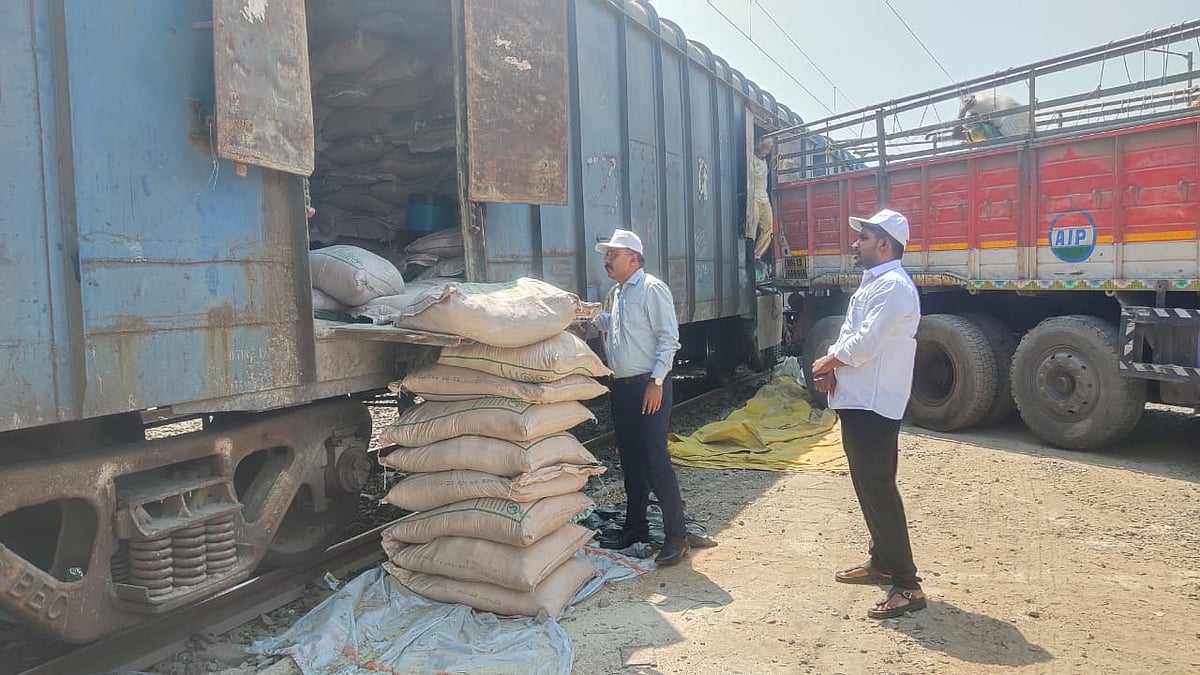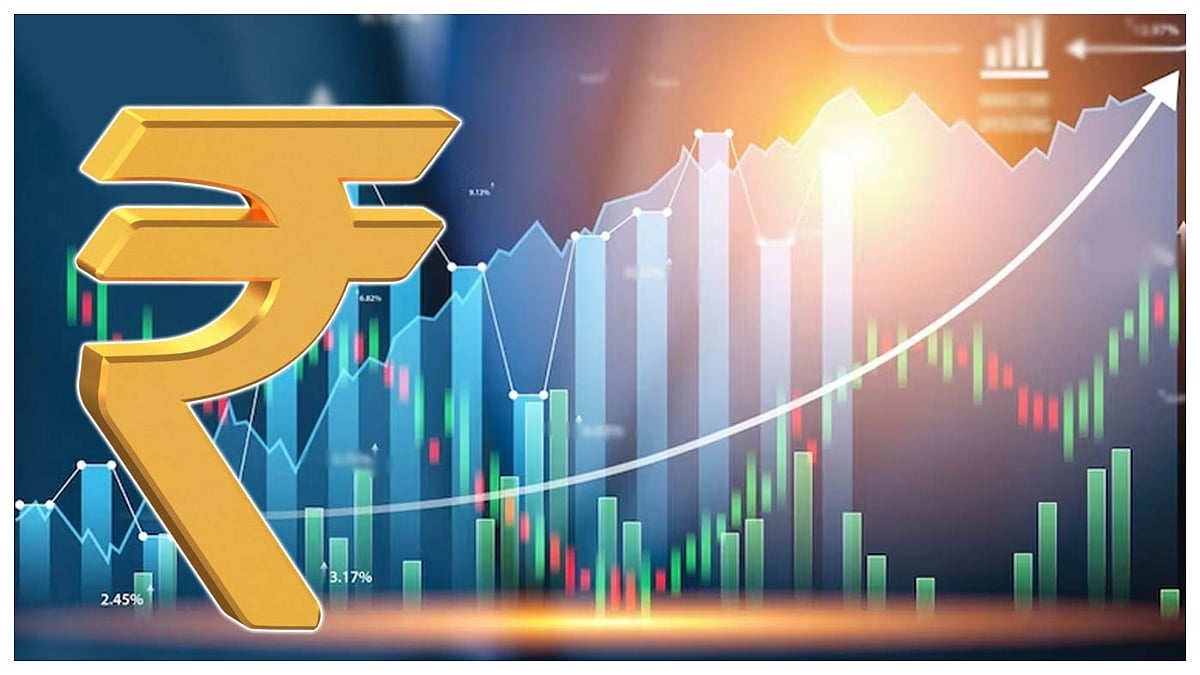India's retail inflation, which is measured by the Consumer Price Index (CPI), rose to 6.95 percent in March from 6.07 per cent in the previous month due to a sharp increase in food prices, the National Statistical Office (NSO) data showed on Tuesday.
Retail inflation as measured by the Consumer Price Index (CPI) has remained above the upper limit of the Reserve Bank of India (RBI) tolerance band for the third consecutive month. The retail inflation stood at 6.01 per cent in January 2022.
The inflation is sharply higher when compared with the previous year. The Consumer Price Index (CPI) based inflation stood at 5.52 percent in March 2021. The price rise was sharper in rural India than in urban. CPI for rural India surged to 7.66 percent in March from 6.38 percent in the previous month.
CPI-based inflation for urban India rose to 6.12 percent in March 2022 from 5.75 per cent in the previous month. The Consumer Price Index (CPI) inflation data is released monthly by the National Statistical Office (NSO), Ministry of Statistics and Programme Implementation.
The Price data are collected from selected 1,114 urban markets and 1,181 villages covering all states/UTs through personal visits by field staff of the Field Operations Division of NSO, MoSPI on a weekly roster.
During the month of March 2022, NSO collected prices from 99.9 per cent of villages and 98.3 percent urban markets while the market-wise prices reported therein were 90.2 percent for rural and 93.2 percent for urban, according to an official statement released by the National Statistical Office (NSO).
India’s factory output, measured in terms of Index of Industrial Production (IIP), witnessed a growth of 1.7 percent in February, mainly on account of rise in the mining sector and power generation.
According to the government data released on Tuesday, the manufacturing sector recorded a growth of 0.8 percent.
The Index of Industrial Production (IIP) had declined 3.2 percent in February 2021.
The cumulative growth in April-February 2021-22 worked out to be 12.5 percent. In the year-ago period, there was a contraction of 11.1 percent.
During the 11-month period, the manufacturing sector recorded a growth of 12.9 percent whereas it was a decline of 12.5 percent in the year-ago period.
This is the third consecutive month in which inflation has come in above the 6 percent upper bound of the Reserve Bank of India’s (RBI) mandate, averaging 6.4 percent in January-March.
Experts weigh in
Santosh Meena, Head of Research, Swastika Investmart Ltd.
Can this inflation print puncture market sentiment? Yes, inflation is one of the biggest concerns for us however most of the pain is already discounted by the market therefore any sign of easing inflation from here may create a relief rally in the market. This quarter and especially next quarter will have a major impact of high raw material prices where management commentary will be important.
In general, it is advised to buy the stocks of commodity producers instead of commodity consumers however the prices of commodity producers companies have already rallied a lot therefore there is a low margin of safety. Investors should focus on sectors that are less sensitive to commodity prices like Banking and Financials, Telecom, and IT while investors should look for high-quality stocks which are under temporary pain due to inflation.
CPI comes at 6.95℅ vs expectations of 6.3℅. There was a chance of a higher than expected number and It is likely to remain higher for the next couple of months but the market will eye on the trend of commodity prices from here.
Raghvendra Nath, Managing Director – Ladderup Wealth Management
Supply chain constraints have time and again hurt the production process across the sectors since COVID. Food which amounts to almost fifty percent of the inflation basket has been one of the victims of the ongoing war, as global grain production got disrupted. Even the prices for edible oil prices and fertilizers contributed to rise in CPI figures for the month to 6.95%. RBI has already addressed the inflation fears and have prioritized tackling inflation over supporting economic growth going forward.
Vivek Rathi, Director-Research at Knight Frank India
March 2022 headline inflation of 6.95% was driven both by food and fuel prices. The food prices inched up sequentially after a three month decline due to seasonal fluctuations; whereas the fuel prices rose pressured by escalating global fuel prices. As the domestic fuel price hikes were kept on hold for most part of March 2022, the complete transmission of global fuel prices on domestic prices is expected to be seen in April 2022 print.
India’s real estate sector withstood the pandemic led economic crisis, and is currently witnessing greenshoots, the momentum is expected to continue into 2022. However, amidst the geo-political tensions and the rise in commodity prices, the spike in key construction raw materials poses upside risks to the real estate industry’s growth trajectory. In the last two years the average prices of key construction raw materials have increased. Furthermore, due to sustenance of inflationary pressure in the economy, as the prices of goods and services rise, the labour costs are expected to increase. The RBI has accounted for 6.3 percent for the June 2022 quarter and hence some pressure on account of elevated inflation level is likely to continue in near future.
IIP at 1.7 percent is reflecting a broad-based trend across segments mainly in capital goods and consumer durables and non-durables segment. Near future developments on geo-political scenario and capacity utilization would be crucial as the reflection of Omicron and third wave wanes from the index.
Aditi Nayar, Chief Economist, ICRA
While the easing of restrictions after the abatement of the third wave mildly propped up the IIP growth in February 2022, it trailed our expectations as well as the core sector's performance, pointing to a disappointing showing of the non-core components, especially consumer goods.
The mild rise in the IIP growth in February 2022 was led by mining and electricity, while the performance of manufacturing slipped to a marginal 0.8 percent YoY rise.
In terms of the use based classification, the performance was decidedly mixed, with a contraction in consumer goods being offset by a sharp 9.4 percent expansion in infra/construction goods. While the 8.2 percent contraction in consumer durables can be attributed partly to a high base and the restrictions in the early part of the month, consumer non-durables also displayed a discouraging 5.5 percent degrowth in February 2022.
While the capacity utilisation for Q2 FY2022 surprised on the upside, and there has been an improvement in new project announcements, the growth in capital goods output remained sub 1.5 percent in Jan-Feb 2022, after the contraction seen in Q3 FY2022.
A majority of high frequency indicators witnessed an improvement in their growth performance in March 2022, aside from a contraction in the output of CIL (after a gap of 11 months), and a sharp moderation in the YoY growth of non-oil merchandise exports, based on which we expect the IIP growth to accelerate to 3-5% in the just concluded month.
Going forward, the surge in global commodity prices and the disruptions caused by the Russia-Ukraine conflict and the supply chain implications of the continued lockdowns in China since March 2022 following the outbreak of a fresh Covid-19 wave in the country do not augur well for output of those sectors, including automobiles, that are dependent on key raw materials provided by Russia, Ukraine or China, in the absence of any other alternatives.










